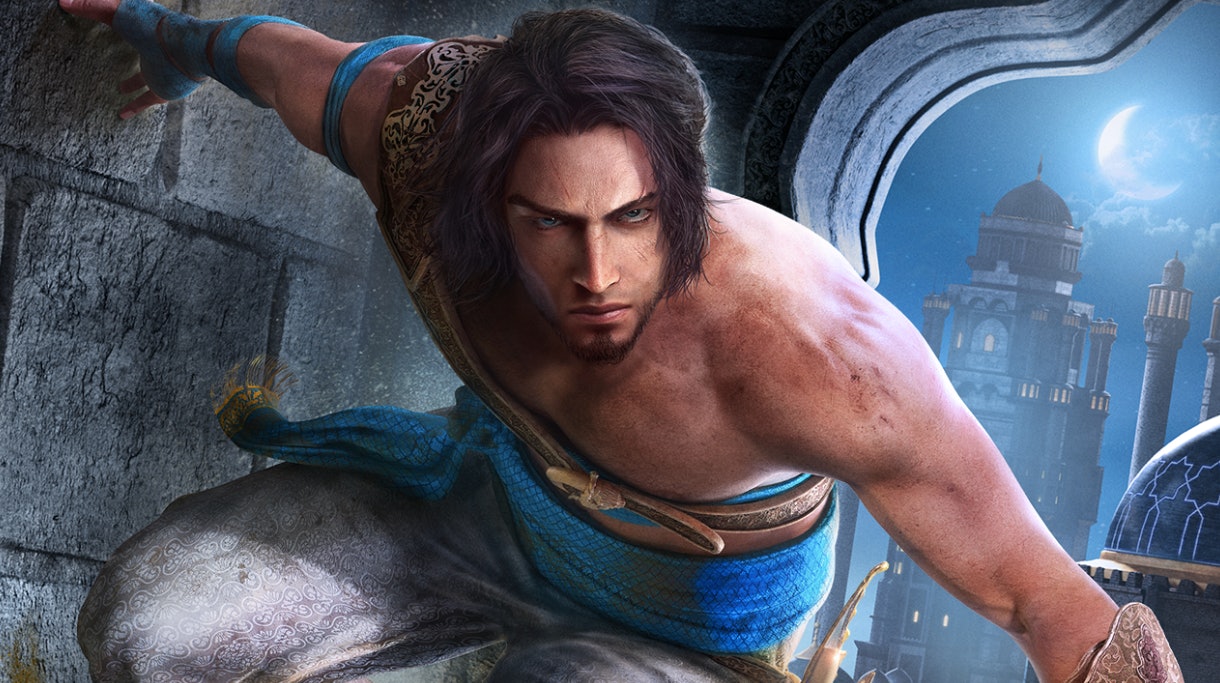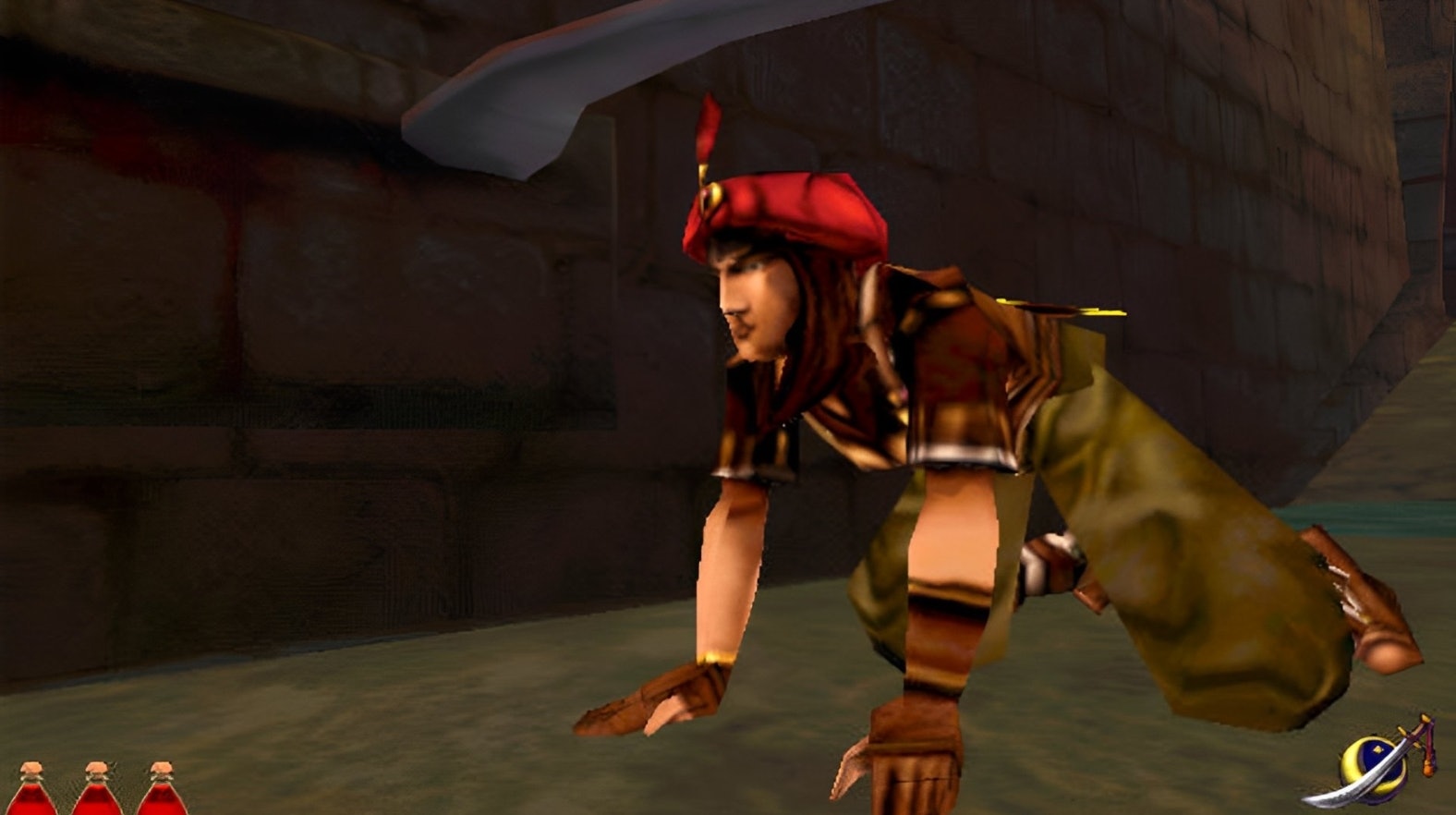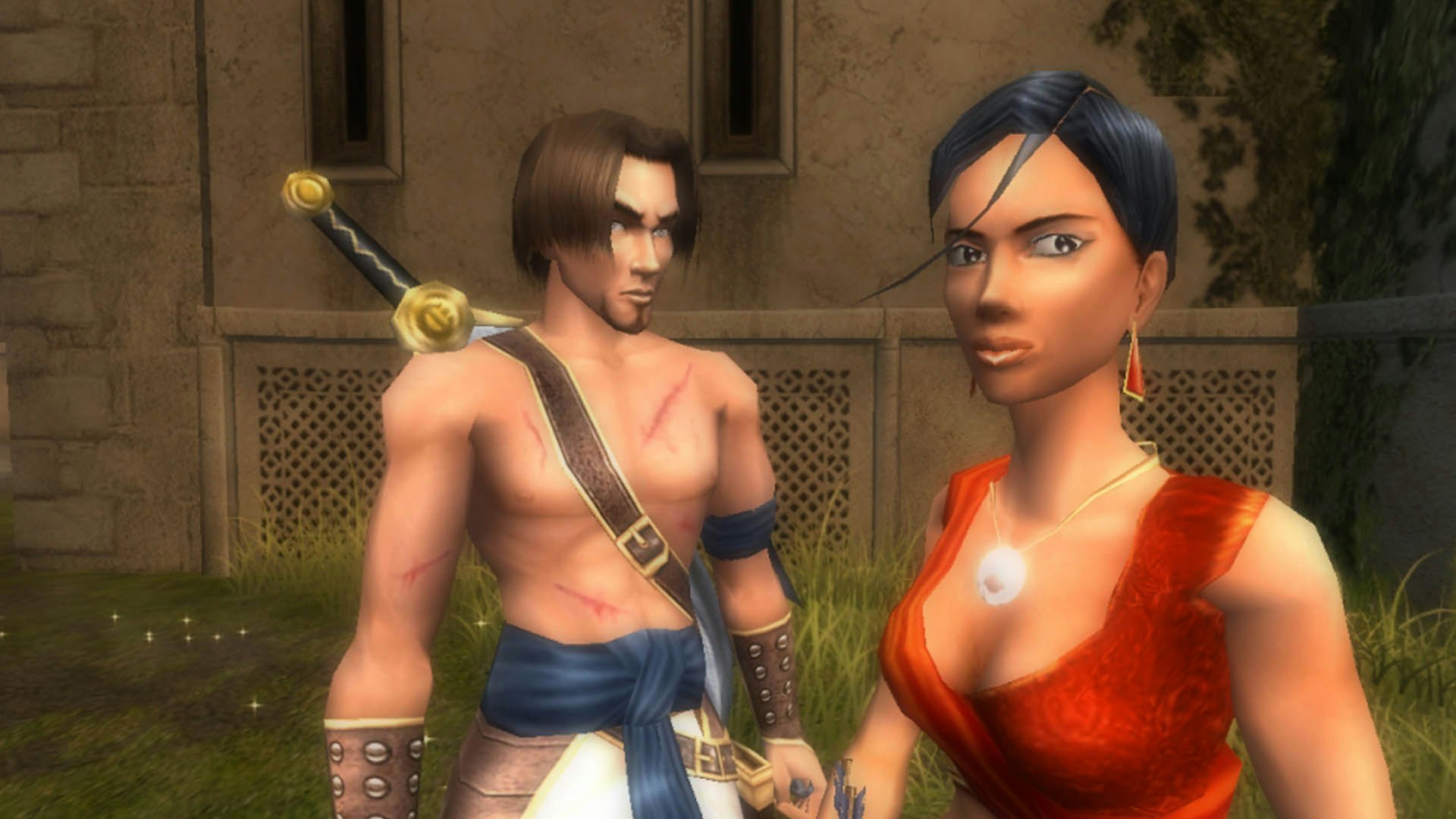
The transition from 2D to 3D decimated gaming’s most famous franchises. For every sublime Super Mario 64, there was a hideous Bubsy 3D. For every inventive Rayman 2, there was a bland Earthworm Jim 3D. For every Sonic Adventure, there was a Sonic Heroes, Shadow the Hedgehog, Sonic the Hedgehog, Sonic and the Secret Rings, Sonic Unleashed, and whatever Sonic game most recently came out as you read this.
Not every franchise had the staying power necessary to shrug off duds. Titles like Final Fight: Streetwise and Golden Axe: Beast Rider were so dull and dreary they abruptly ended beloved series, and for a while, it looked like Prince of Persia would share their fates. But in 2003, four years after Prince of Persia 3D flopped, The Sands of Time saved the day with a near-perfect adventure.
Prince of Persia was always known for its innovations. Its 1989 Apple II debut, designed by Jordan Mechner, used rotoscoping to give its platforming and dueling the look of a living swashbuckler. In 1999, Prince of Persia 3D was supposed to bring the series’ puzzles and platforming to a new dimension, but muddy graphics, a clunky camera, and inarticulate controls made it difficult to capture what made the 2D games so compelling. There were flashes of brilliant level design, but the development team just couldn’t grasp the nuances of the Z-axis.

A frustrated Mechner left the industry, but then Ubisoft came calling about a reboot. Long story short, Prince of Persia: The Sands of Time became one of the most acclaimed titles of a generation. The franchise’s second transition attempt remains a landmark in how to pivot a franchise, offering a fresh take that retained the old ethos.
First and foremost, Sands’ platforming is luxurious. Chaining together wall running, pillar climbing, and trap dodging is immediately intuitive but demands timing and attention, especially once complicated sequences begin to require long strings of uninterrupted success. Often, one error is enough to send you plummeting into a bottomless pit, which is where the game’s second selling point emerges.
The Prince soon acquires the Dagger of Time, which allows him to unwind mistakes and control the flow of combat. A feature inspired by, of all things, designer Patrice Désilets’ frustrations with Donald Duck: Goin’ Quackers, it’s more than a simple undo button. You have to ration your sand and take dangerous diversions to expand the Dagger’s capacity, making it a memorable tool before time manipulation became a recognized game mechanic.
When you’re not deciding whether it’s worth spending precious sand to undo the damage caused by taking an oscillating axe to the gonads, you’re either fighting or puzzling out elaborate contraptions. You’re joined by Princess Farah, a tenuous ally. A companion character isn’t a novel idea either, but in 2003, it was refreshing to have one that pumped arrows into your foes and moved winches for you rather than get stuck in doorways.

The story, involving the machinations of an evil vizier, is appropriately small-scale. But the Prince brings it to life with witty commentary. In a nod to the franchise-inspiring One Thousand and One Nights, the Prince tells the story like a bedtime tale, offering thoughtful asides and pausing to correct himself when you send him to his doom, only to pluck him back out of it with the sands.
All this added up to fawning reviews and monster sales, its 14 million copies smashing earlier Prince titles. Sands brought the franchise back to life and into the hands of Jerry Bruckheimer, who produced a (terrible) 2010 movie starring the first man anyone thinks of when they hear “Persian prince,” Jake Gyllenhaal. Awful, but surprisingly profitable, it was only the start of Sands’ long reach. The behemoth Assassin’s Creed franchise owes its existence to ideas explored for a Sands sequel, a grim irony given that interminable Assassin adventures would supplant the Prince as Ubisoft’s flagship franchise.
The actual sequel to Sands of Time, Warrior Within, doubled-down on combat and ditched Sands’ whimsical storyteller for a grimdark Prince who gave the impression of blasting Disturbed and Korn when off the clock. The Two Thrones walked things back to satisfying results, but the formula began to repeat, and the franchise slipped from Sands’ high point. A gorgeous but simplistic 2008 reboot proved divisive, and then, after a competent but unremarkable return to the Sands continuity in 2010, the series laid dormant… until now.

In January, The Lost Crown will bring back time-travel powers and return the Prince to his 2D roots as he must overcome fearsome enemies and a bad haircut to navigate a Metroidvania world. Early previews are promising, which is more than can be said for The Sands of Time remake, which parkoured well past its initial 2021 release date.
As of May, delay after delay forced Sands 2.0 to scrap years of progress and retreat to the “conception phase.” That’s disappointing but also encouraging. Ubisoft seems to understand how important it is to get this one right. Developers have no time travel powers, and flubbing the franchise’s most beloved installment could send the Prince of Persia back into the abyss for good.
In the meantime, Sands of Time is still available on the cheap, and its dated visuals will soon fade into the background of a thrilling adventure through a sandy palace. You can complete it over a weekend but, as befitting its themes, the memories will stay with you for a long, long time.






